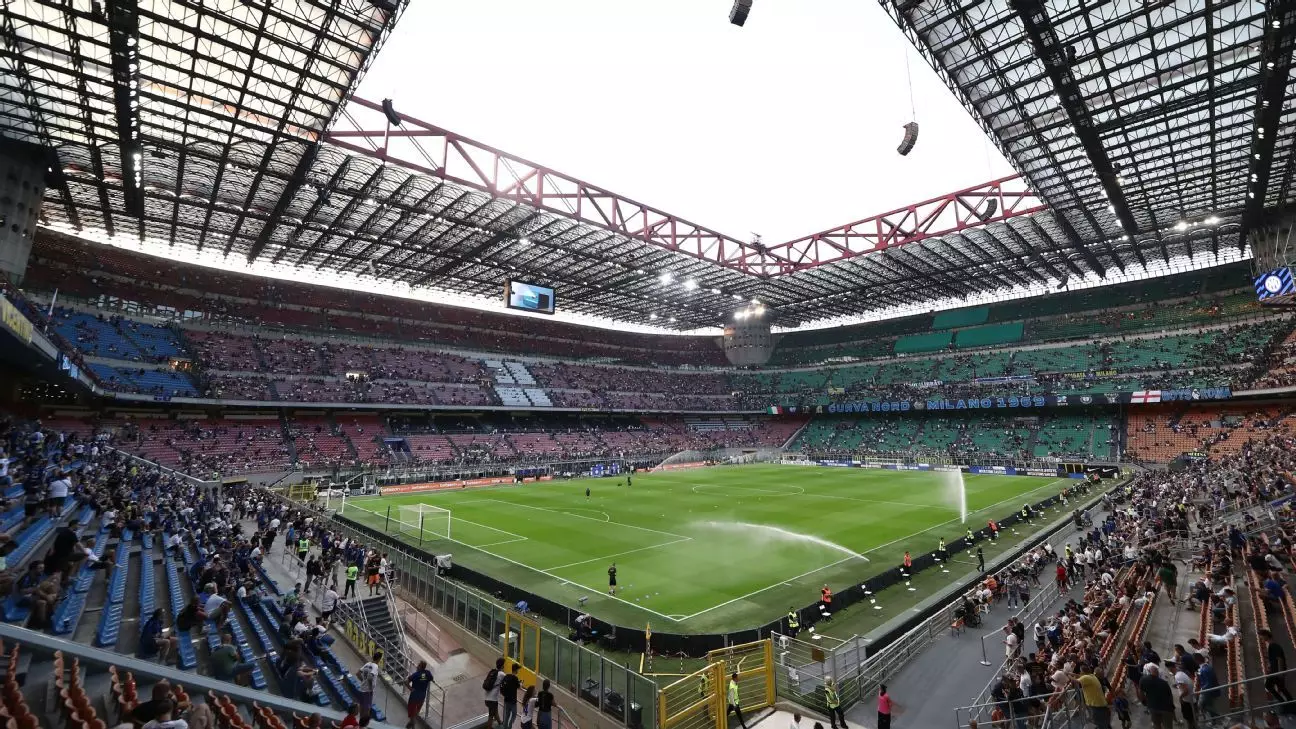In a forward-thinking move, AC Milan and Inter Milan have chosen to abandon their plan to renovate the historic San Siro stadium. Instead, the two Serie A giants are pivoting towards a proposal to construct a brand-new joint stadium in the surrounding area. Milan’s mayor, Giuseppe Sala, revealed this significant development following an extensive behind-the-scenes meeting with club representatives. This decision underscores ongoing discussions that have swirled for the last five years about the future of one of football’s most iconic venues.
Both clubs came to the conclusion that attempts to renovate the aging San Siro to meet modern standards were economically unviable. Mayor Sala stated that a thorough evaluation revealed no feasible pathway for a cost-effective revamp of the stadium. This aligns with broader trends in sports architecture where aging venues often face hurdles in adapting to contemporary demands. The rejection of renovation speaks volumes about the clubs’ aspirations to enhance their commercial viability amidst a competitive European landscape.
Inter and AC Milan are eyeing the potential benefits that a state-of-the-art facility could confer. One of their key motivations is to elevate revenue streams that currently fall short compared to top European clubs. An updated stadium could not only provide additional seating but could also offer enhanced amenities, thereby attracting larger crowds and hosting diverse events beyond football. This modern approach would position them favorably in the increasingly globalized sports market.
This recent shift in strategy is particularly notable given that earlier proposals included constructing separate stadiums on the outskirts of Milan. However, it appears that collaboration for a common facility has emerged as a more appealing alternative for both teams. Such an approach not only signifies a united front but also indicates their commitment to shared aspirations beyond traditional rivalries.
Navigating the complexity of heritage regulations has proven to be one of the most challenging aspects of this endeavor. The San Siro, built nearly a century ago, is a cultural landmark that is protected by various heritage laws. This has previously stalled attempts to modernize it, as both the clubs and the local government grapple with maintaining respect for the stadium’s historical significance while addressing the need for modernization.
To proceed with their new plans, AC Milan and Inter Milan have proposed purchasing the land around the old stadium, allowing them to develop a new venue without tearing down the existing structure immediately. Both clubs are intent on understanding the economic landscape surrounding the current facility, examining potential profitability and the impact of heritage laws. They have sought not only an evaluation of the economic value of the stadium and its surroundings but also clarity on the extent of heritage protection applicable.
Despite the complexities tied to these plans, Mayor Sala noted that such projects are inherently challenging in Italy, yielding a degree of frustration all around. As the situation evolves, the municipalities and clubs must work in tandem to ensure that solutions are found that respect both the cultural value of San Siro and the ambitious commercial goals of AC Milan and Inter Milan.
As both clubs embark on this path toward a new project, the spotlight remains fixed on the balance between tradition and innovation. The football world will be watching closely, as outcomes from these negotiations may herald a new era for Milanese football and its historic rivalry. The overarching hope is that with shared vision and cooperation, the legacy of San Siro will not only continue but thrive in a modern context.

Leave a Reply